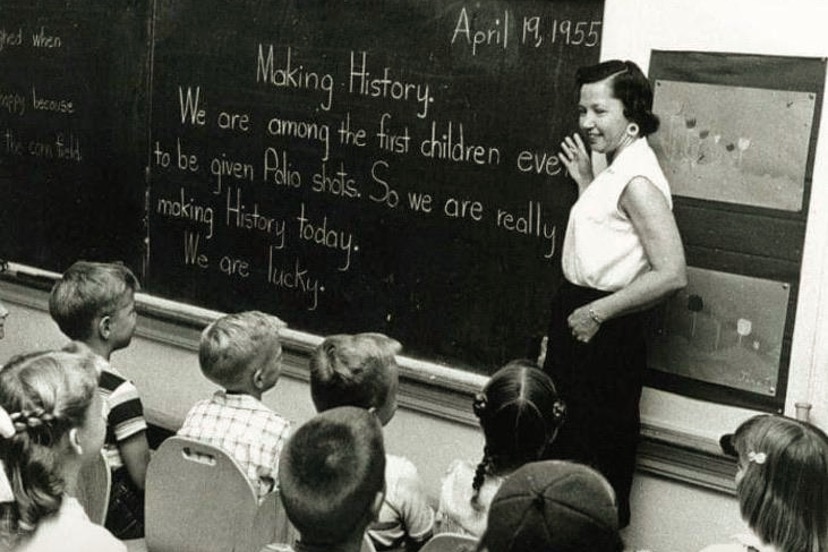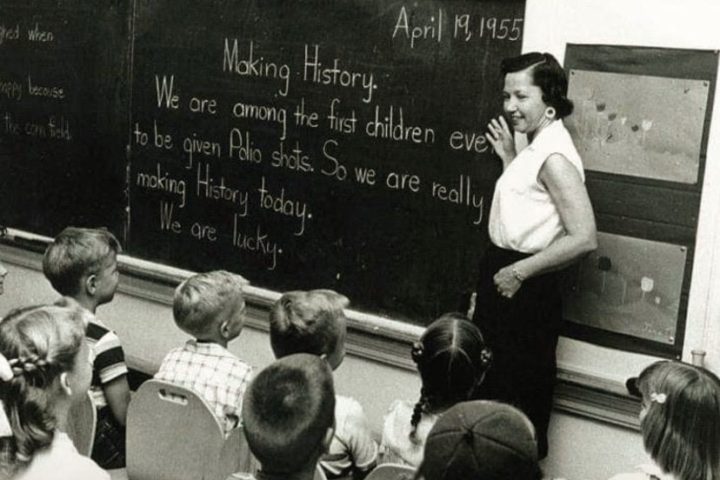This article by Erica Meltzer first appeared on Chalkbeat.org on December 9, 2020
Colorado teachers and child care providers will have access to a COVID vaccine sometime this spring — after health care workers and residents of nursing homes and before the general public, state officials said Wednesday.
But with perhaps millions of Coloradans — including those age 65 and older and those with preexisting conditions — in the same category as educators and other public-facing essential workers, it’s not clear yet where school staff fall in line.
With most Colorado students learning from home right now, some leaders have called for teachers to move up in the priority rankings as part of a broader effort to reopen classrooms.
Instead of answering questions about vaccinating teachers, last week, Governor Jared Polis reiterated his belief that it’s relatively safe for teachers and students to be in school even without the inoculation, which will take at least six months to widely administer.
“We’ve learned from the early days of the pandemic that schools are very safe,” Polis said.
The updated vaccine distribution plan released Wednesday describes three phases or priority tiers. The first phase is itself divided into two groups. In Phase 1A are health care workers who treat COVID patients and residents and staff of long-term care facilities. They would start to receive their first dose of the two-dose vaccine later this month. In Phase 1B are health care workers with less direct contact with COVID patients, workers in home health, hospice, and dental settings, and first responders like police officers, prison guards, and paramedics.
Phase 2 includes:
- People age 65 or older.
- People of any age with obesity, diabetes, chronic lung disease, significant heart disease, chronic kidney disease, cancer, or who are immunocompromised.
- People who interact directly with the public at work, such as grocery store workers and school and child care staff.
- People who work in high-density settings like farms and meat-packing plants.
- Workers serving people who live in high-density settings.
- Health care workers not included in Phase 1.
- Adults who received a placebo during a COVID-19 vaccine clinical trial.
These people would be eligible to receive the vaccine starting in the spring.
Phase 3 is the general public ages 18 to 64. Colorado officials expect to offer the vaccine to them starting in the summer. The vaccine has not yet been approved for use in children, though if it is, some children with risk factors could move up in the priority list.
“Our main focus is to ensure we save the most lives and end the crisis that has been brought on by the pandemic as quickly as possible,” Polis said. “This vaccine is the gateway to the end of the pandemic, to a return to normalcy. We can see the end in sight.”
Polis warned Coloradans the state still has “a long road ahead,” a shift from early November when, in response to news about successful vaccine trials, he optimistically told Coloradans to “buckle down and successfully isolate for a few more weeks and months here.”
An earlier draft of the vaccine distribution plan placed teachers somewhat higher, though still behind health care workers and nursing home residents. This version makes fewer distinctions between people in the middle tier. Another major change is that it no longer gives priority to people in congregate living situations like prisons and homeless shelters, which have been the site of major outbreaks. Instead, like people living in houses and apartments, those people would be vaccinated according to other factors, like age and health status.
There has been considerable debate nationally about how to prioritize people for a vaccine. People who have some risk factor, whether due to age, health condition, or profession, make up a huge portion of the population. Roughly 70% of the American workforce is considered essential, including many people in jobs that aren’t public-facing. The earlier draft of the plan laid out complicated trade-offs between vaccinating people who have the highest personal risk, those who face the most exposure, and those who play critical roles in keeping society functioning. For example, a retired person might be at higher risk because of age but at lower risk because they can isolate at home.
Polis did not answer a question about whether or how people in Phase 2 categories might be prioritized. A spokesperson for the Colorado Department of Public Health and Environment said the plan has been “rapidly evolving,” and groups will be prioritized “dependent on supply,” which she said is expected to be very limited at first.
The state has placed an order for 46,800 doses of the Pfizer vaccine and plans to order 95,600 doses of the Moderna vaccine this week. Because both products require two doses to be effective, together they would cover about 71,200 people. Colorado will get doses of the vaccine in proportion to its population, and the schedule for widespread vaccination depends on a steady supply from the federal government, officials said.
Colorado estimates there are 114,000 residents and staff in long-term care facilities and 331,000 health care workers included in the first two phases, but doesn’t know yet how many people are in all the other categories.
Bret Miles, head of the Colorado Association of School Executives, said he was glad to see teachers in Phase 2 and hopes that within that, educators will receive priority.
“We’ve been working so hard to stay open and serve all those roles that schools provide,” he said. “Getting a teacher vaccinated checks so many boxes. It’s good for the teacher. It’s good for the students and parents. It’s good for their elderly relative. It’s good for businesses.”
He also hoped that vaccination would give teachers and school administrators some relief from quarantine requirements that have created significant staffing challenges. While he expects some teachers and school staff won’t trust the vaccine, others will get peace of mind.
But the long timeline for vaccine rollout seems to make it unlikely that inoculation will play a major role in getting students back to school this school year, especially because it requires two doses a month apart.
“I’m an advocate for our educators to be in Phase 1, up there with our critical workers,” said Tom Gonzales, director of Larimer County Public Health and a member of the state task force charged with getting students back in school.
“Given the critical nature of what our educators provide, we do believe educators should be prioritized,” said Amie Baca-Oehlert, president of the Colorado Education Association, the state’s largest teachers union. “Especially if we want to prioritize in-person learning, the vaccine is a crucial component.”


